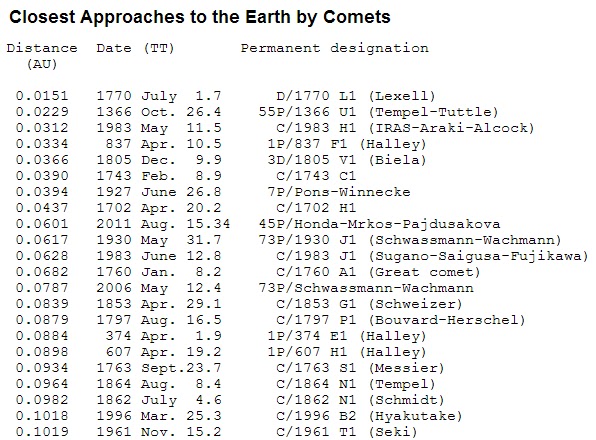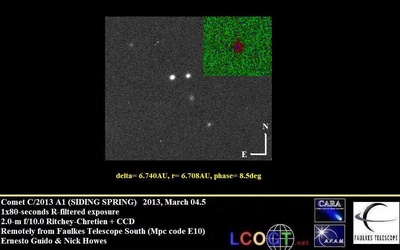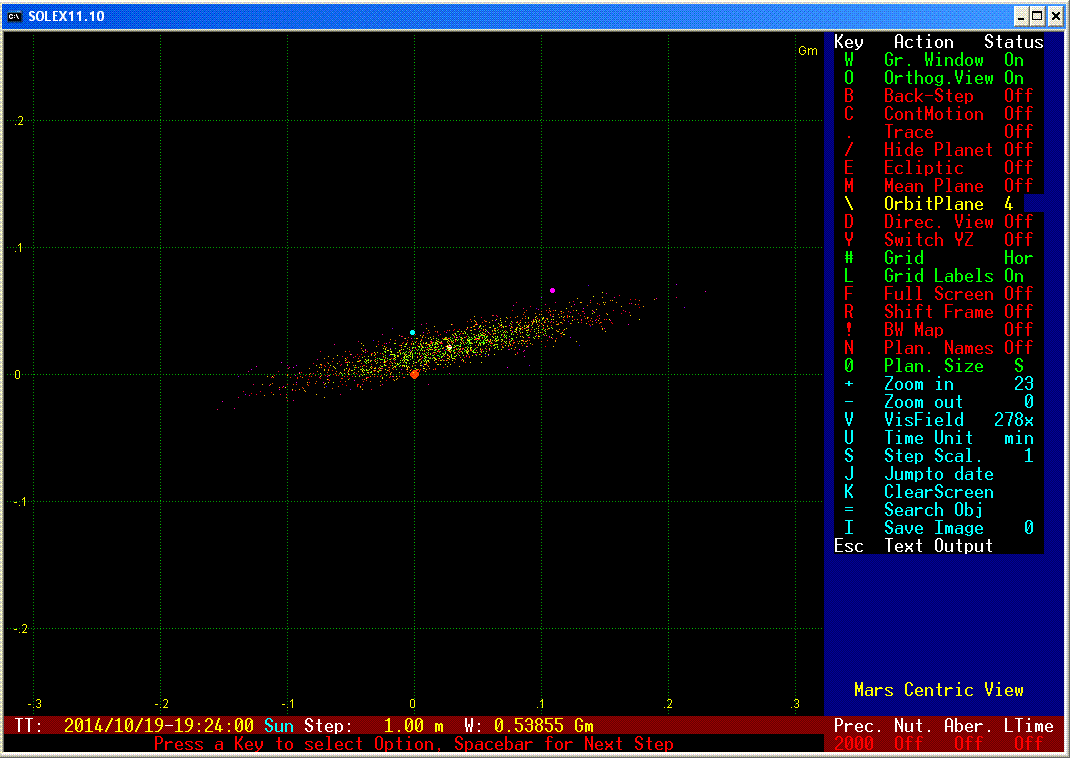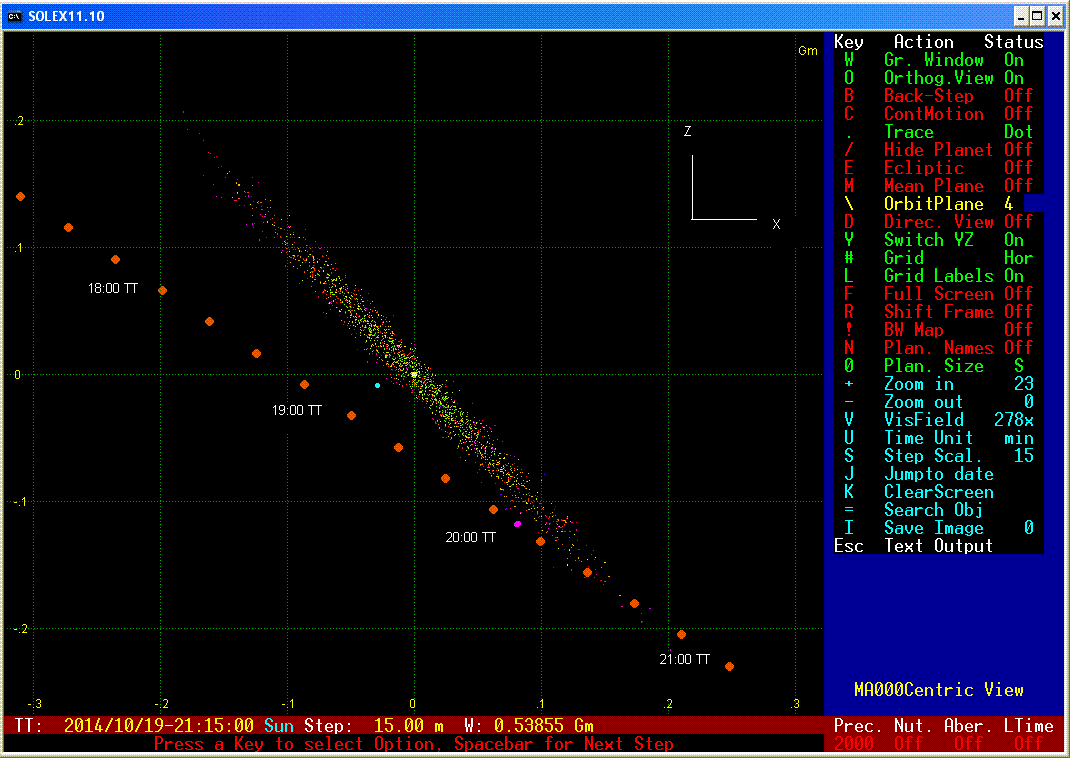Comet C/2013 A1 and its close approach to Mars
Precovery images of the comet *(images taken but not known/recorded of the comet) by the Catalina Sky Survey from 8 December 2012 and Pan-STARRS from 4 October 2012 were subsequently found and then used in an attempt to determine the orbit.
It has been noted that C/2013 A1 will have a very close approach with planet Mars on October 19, 2014. With an observation arc thus far of 148 days, JPL/NASA give a nominal closest approach of ~0.0003578 A.U. which is around 53,500 km on 2014 Oct. 19 at approximately 19:28UT +/- 1:03. The comet will pass Mars at a relative velocity of 56 km/s. Early estimates for the diameter of the nucleus have varied from 5 up to 50 km.
Due to the uncertainty within the orbital calculations, there is also a very small possibility that the comet may impact Mars (~ from 0.1% to 0.01% according to how you handle the observations thus far. See here for more info about this).
By comparison below you can find a table of the the closest known approaches to the Earth by comets published on Minor Planet Center website. This list is intended to be complete for comets discovered after 1700 that approached the earth to within 0.1020 AU. It also includes a number of well-documented earlier approaches by periodic comets. C/1491 B1 allegedly came to within 0.0094 AU on 1491 Feb. 20.0 TT, but the orbit of this comet is very uncertain.

The plots below made by Aldo Vitagliano with his software Solex through a MonteCarlo generation of clones, "shows a picture of the current prediction taken about half an hour before the possible impact. The generation of clones was made assuming equal weights on all observations (one discarded) and an esd of. 0.5 arcsecs. In total, 2000 clones are represented.......The blue dot represents the "old" nominal solution. The white dot is the new nominal solution and the magenta dot is an impactor. One grid square is 100,000 km and the XY axes are in the plane of the Mars' orbit." (click on the image below for a bigger version.
In the second plot the plane is rotated by 90°, so the axes are now X and Z (Z perpendicular to the Mars' orbital plane). The origin is not longer fixed on Mars, but is fixed on the nominal solution, and the plot shows how Mars moves with respect to the cloud. (click on the image below for a bigger version)
We performed follow-up measurements of this object remotely from the Faulkes Telescope South (mpc code E10) on 2013, March 04.5 through a 2.0-m f/10.0 Ritchey-Chretien + CCD. (Faulkes Telescope is operated by Las Cumbres Observatory Global Telescope Network)
At top you can see an image of comet C/2013 A1 (single 80-second exposure. Click on the image for a bigger version). Our team will be closely monitoring this comet and feeding our observations to the minor planet centre to hopefully assist in resolving the orbit, and helping determine whether or not this comet will impact Mars.
More info about this close approach here & here.
by Ernesto Guido & Nick Howes


